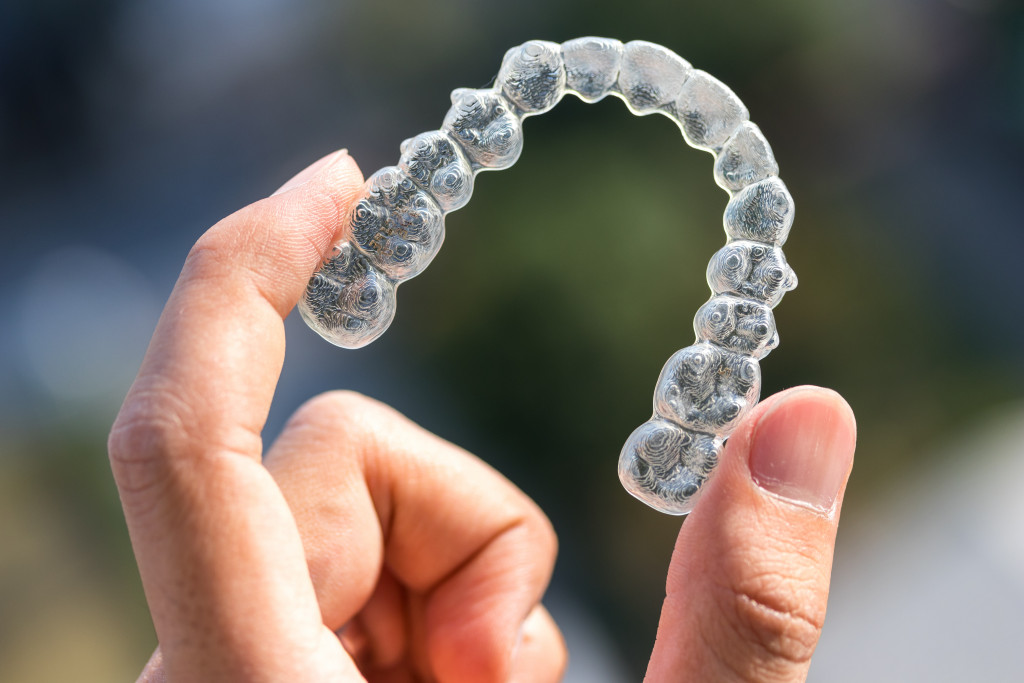Just when you thought that the era of braces is over, your dentist introduces you to dental retainers. It’s common practice for dentists to encourage the regular practice of retainers after braces have been removed. Why is that so?
Retainers’ job is to do just that–retain the position of your teeth. Just because you previously had braces that don’t mean that your teeth will no longer move. Even after braces, your teeth can still change their positions. It takes about four to six months for the position of your teeth to become permanent. That’s where dental retainers come in. They hold your teeth in place, maintaining the hard work of your braces.
It’s probably seen as an extended hassle, but nobody would want to undo the work of their orthodontic treatment. But other than aesthetic purposes, they help solve medical or speech problems too.
Why Do I Need To Wear My Retainer?
After the braces are removed, your orthodontist will fit you for your retainer and advise you when to wear them and for how long. A common practice is to wear them during nighttime, so it’s barely noticeable and it’s not much of a hassle. But sometimes, the orthodontist advises the patient to wear theirs all day for a couple of months and then only at night after that. It all depends on the assessment of the orthodontist.
It may be an additional hassle to some, especially after having to deal with braces for a long. However, the minor inconveniences of wearing your retainers don’t outweigh the long-term benefits. For one, it’s important to wear them because your teeth shift naturally as your body grows. Sometimes, a retainer is used to close a gap between teeth instead of braces since it does the job just as well. Maintaining your post-treatment teeth also helps reduce jaw problems, gum disease, cavities, improves digestion, and self-confidence.

Different Types of Dental Retainers
Generally, there are two types of retainers: permanent and removable. Depending on the assessment of your orthodontist, a removable retainer will do. but sometimes both types are recommended by your orthodontist.
Different types of retainers include a lingual wire, fixed, or bonded retainer (permanent), Hawley retainer (removable), or clear plastic retainer (removable). Depending on the orthodontist’s advice and the patient’s preferences, any of these retainers should serve the purpose of straightening or maintaining your teeth post-braces.
A lingual wire, fixed, or bonded retainer is a metal wire that’s curved to fit the shape of the teeth post-braces. The wire is cemented in the inside of the front teeth. Since these are permanent, there’s no need to follow instructions on when and often you should wear them. They are not visible to others, can’t be misplaced, and can last for years. Because they are permanent, they can only be taken out by visiting your orthodontist.
Meanwhile, the Hawley retainer and clear plastic retainers are removable. They’re easily removed when needed and are made to fit. Hawley retainers are adjustable and don’t stain easily. On the other hand, plastic retainers are thinner and can be more of a comfortable option, more “invisible” than Hawley retainers, and convenient to have multiple copies of.
Again, the type of retainer a patient chooses depends on their preference and the assessment of their dentist.
What Happens if I Fail To Wear My Retainer?
Forgetting to wear your retainer for a day or two might seem like it’s not a big deal. However, this risks making it into a habit that will only ruin your teeth’s placement. What does happen if you fail to wear your retainer? The obvious answer would be that your teeth will go through unwanted changes. They will shift back to their original placement or create unwanted changes in your bite. In addition, there’s also the possibility of the teeth shifting to an even worse position than before. As a result, you might have to seek orthodontic treatment again.
During the first year after the brace treatment, the gums are still reorganizing themselves to the new teeth positions. This period is most crucial for retaining the corrected placement of your teeth. Wear your retainer promptly and as advised to prevent more costs on dental corrections in the future.
Maintaining your straight teeth doesn’t just improve your appearance, but its performance too. The bite is better and you can chew with ease. Corrected teeth reduce the chances of disease-causing bacteria lingering in your mouth. With all these health and aesthetic benefits, wearing your retainer for as long as it’s advised is the best way to go.
